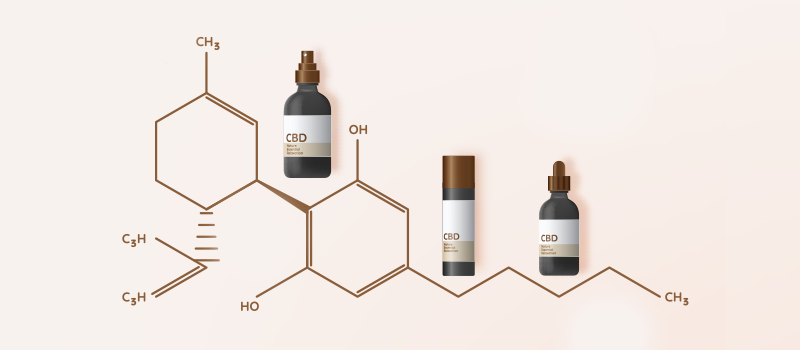Wrist Pain Causes & Treatments

The wrist joint consists of several small bones supported by many muscles, ligaments, and tendons. Wrist pain can occur due to several different causes. Sports injuries, repetitive stress on the wrist, and certain diseases such as arthritis are common causes of wrist pain.
Not all wrist pain is serious. Most of the time, it settles down in a few days to weeks. Proper treatment for wrist pain depends on the underlying cause. Treatment can range from wearing a protective splint to taking pain medication, working with a physical therapist or occupational therapist, or even surgery. Please continue reading to find out more.
What causes wrist pain without injury?
Here are some of the common causes of wrist pain:
Carpal tunnel syndrome
This common problem causes wrist pain, weakness, numbness, and tingling. Carpal tunnel syndrome occurs when the median nerve gets squeezed as it passes through a narrow canal in the carpal bone. The repetitive motion of the joint and carrying excess weight are risk factors for carpal tunnel syndrome. People who work for long hours on a keyboard or grasp tools with their hands are at risk of developing carpal tunnel syndrome.
Treatment for carpal tunnel syndrome consists of wearing a protective splint to relieve symptoms. Additional measures include pain medications, ergonomic changes to the work environment, and wrist exercises for stretching and strengthening the muscles. Carpal tunnel surgery is sometimes necessary to relieve the compression of the median nerve and ease wrist pain.
Tendinitis
There are many tendons in the hand and wrist that connect muscles to bones. Inflammation and irritation of these tendons can cause wrist pain and swelling, called tendinitis or tendonitis. A common type of tendinitis responsible for causing wrist pain is called de Quervain’s tendinitis. It causes severe pain on the thumb side of the wrist with movement. Severe spontaneous rupture of compressed tendons can also cause wrist pain.
Treatment for tendonitis consists of RICE therapy (wrist rest, ice, compression, and elevation), a wrist splint, pain medications, and physical and occupational therapy.
Gout
Gout is a type of arthritis that causes painful, swollen, and tender joints. It occurs when there is too much uric acid in the body. Uric acid crystals get deposited in the joints, causing pain. Gout symptoms occur due to these painful crystals and are commonly present in the big toe. However, gout can also occur in other joints, such as the hands and wrists, making it difficult to hold things or brush your teeth.
Treatment for gout consists of taking nonsteroidal anti-inflammatory drugs (NSAIDs) (for example, ibuprofen and naproxen sodium) and corticosteroids to reduce inflammation. An anti-inflammatory medication called colchicine (Colcrys, Mitigare, Gloperba) is particularly effective for gout pain. In addition, doctors prescribe medications such as allopurinol (Lopurin, Aloprim) to decrease the amount of uric acid in the body and probenecid (Probalan) to aid the kidneys in removing excess uric acid from the body.
Ganglion cysts
These are tiny, non-cancerous, fluid-filled lumps that form in the wrist joint. They can press against nerves and cause chronic pain. This is usually a dull ache, along with numbness and tingling.
Treatment for wrist pain due to a ganglion cyst consists of wearing a splint or brace to prevent movement of the joint. Healthcare providers can also drain the cyst with a needle to relieve pressure; however, the cyst can come back. Orthopedic surgeons can also surgically remove ganglion cysts, but they can come back even after surgery.
Osteoarthritis (OA)
This is a common form of arthritis that occurs due to progressive wear and tear of the wrist joint with age. It causes the cartilage and connective tissue to get worn down, allowing the bones to rub against each other, causing hand and wrist pain, swelling, and stiffness.
Pain relieving creams, anti-inflammatory medications, steroid shots, and wrist splints are used to relieve pain and swelling and improve joint range of motion. Rarely is surgery necessary to have arthritis-related wrist pain treated.
Rheumatoid arthritis (RA)
Rheumatoid arthritis is an autoimmune disease in which the body’s immune system mistakenly attacks healthy tissue. The small joints of the hands and feet are commonly involved. Rheumatoid arthritis can lead to wrist joint inflammation and damage, resulting in deformity and disability.
Doctors can diagnose wrist pain caused by rheumatoid arthritis with the help of blood tests to measure inflammatory markers like erythrocyte sedimentation rate (ESR) and C-reactive protein (CRP) and antibodies such as rheumatoid factor (RF) and antinuclear antibody (ANA). In addition, imaging studies such as X-rays and magnetic resonance imaging can show soft tissue swelling and joint erosion.
Nonsteroidal anti-inflammatory drugs can provide temporary relief from wrist pain due to RA. In addition, disease-modifying anti-rheumatic drugs (DMARDs) are very useful in treating wrist pain due to rheumatoid arthritis. Examples of these medications include methotrexate, sulfasalazine, leflunomide, and hydroxychloroquine. Biological DMARDs specifically target the immune system and include:
- Tumor necrosis factor (TNF-alpha) inhibitors such as etanercept, infliximab, adalimumab, golimumab, and certolizumab
- Interleukin-6 inhibitors such as sarilumab and tocilizumab
- Interleukin-1 inhibitors like anakinra
- T-cell co-stimulation inhibitors like abatacept
- B-cell depleting agents like rituximab
- Janus kinase inhibitors such as upadacitinib, tofacitinib, and baricitinib
Psoriatic arthritis
Psoriasis is an autoimmune condition of the skin. People with psoriasis can develop a type of inflammatory arthritis called psoriatic arthritis, with painful, swollen, and stiff joints that get progressively worse. The arthritis typically develops 5-10 years after a psoriasis diagnosis is made.
Treatment for psoriatic arthritis is similar to rheumatoid arthritis and consists of nonsteroidal anti-inflammatory drugs, corticosteroids, disease-modifying anti-rheumatic drugs (DMARDs), and biological therapies.
Wrist injury
A wrist sprain can make your wrist hurt. It usually improves with home treatment consisting of RICE therapy (rest, ice pack, compression, and elevation).
More severe acute injuries, such as fractures, can cause wrist pain, tenderness, swelling, bruising, and obvious deformities such as a bend in the wrist. Fractures can occur due to falls (especially falling on an outstretched hand), motor vehicle accidents, and sports injuries.
Treatment for broken bones consists of immobilization with a splint or cast, medications to reduce pain, and physical and occupational therapy to reduce stiffness and return range of motion in the wrist after the injury has healed.
Frequently Asked Questions
How do I know if I have carpal tunnel or tendonitis?
Wrist pain due to carpal tunnel syndrome occurs due to repetitive tasks. It is typically located on the palm side of the wrist and is worse at night, even awakening you from sleep. The pain is accompanied by numbness and tingling in the thumb, index, and middle finger. Wrist tendonitis symptoms are slightly different (see below).
What does wrist tendonitis feel like?
Wrist pain due to tendinitis typically increases with movement. You may find it difficult to perform certain movements, such as turning a doorknob, opening a jar, or picking things up. Tendonitis wrist pain is often accompanied by swelling, stiffness, and a popping sensation. You may be able to feel a lump or bump near the affected tendon.
What does arthritis in the wrist feel like?
Wrist pain due to arthritis can be a dull ache or a sharp pain. It can be accompanied by stiffness and swelling. There may be a decrease in your grip strength, resulting in difficulty opening jars, turning doorknobs, or bending your fingers. You may also experience a reduced range of motion and increased pain with movement.
How do you relieve wrist pain?
Here are some measures that can help ease pain in your wrist:
- Take frequent breaks while performing repetitive movements such as typing on a keyboard, using a drill, or playing the guitar.
- Wear gloves and hand warmers to keep your hands and wrists warm and prevent stiffness in cold weather.
- Stretch your hands and wrists to keep your muscles flexible and prevent wrist pain.
- Take oral over-the-counter pain medications or use pain relieving creams for wrist arthritis.
- Wear a wrist splint to relieve pressure and prevent movement of the joint if you have carpal tunnel syndrome or a ganglion cyst.
How do I know if my wrist pain is serious?
Your wrist pain might be serious if it lasts for more than a few days, becomes progressively worse, does not improve with home treatments, or is accompanied by other symptoms such as swelling, bruising, or an obvious deformity.
Make an appointment to see your doctor if this is the case. They will obtain a history, perform a physical examination, and order imaging studies and laboratory tests to make an accurate diagnosis.
References:
- https://my.clevelandclinic.org/health/symptoms/17667-wrist-pain
- https://www.hopkinsmedicine.org/health/conditions-and-diseases/carpal-tunnel-syndrome
- https://my.clevelandclinic.org/health/diseases/22196-wrist-tendonitis
- https://www.mayoclinic.org/diseases-conditions/gout/diagnosis-treatment/drc-20372903
- https://www.mayoclinic.org/diseases-conditions/ganglion-cyst/diagnosis-treatment/drc-20351160
- https://my.clevelandclinic.org/health/diseases/21595-arthritis-in-wrist
- https://www.ncbi.nlm.nih.gov/books/NBK560890/
- https://www.nhs.uk/conditions/psoriatic-arthritis/#
- https://www.mayoclinic.org/diseases-conditions/broken-wrist/symptoms-causes/syc-20353169












SOCIAL